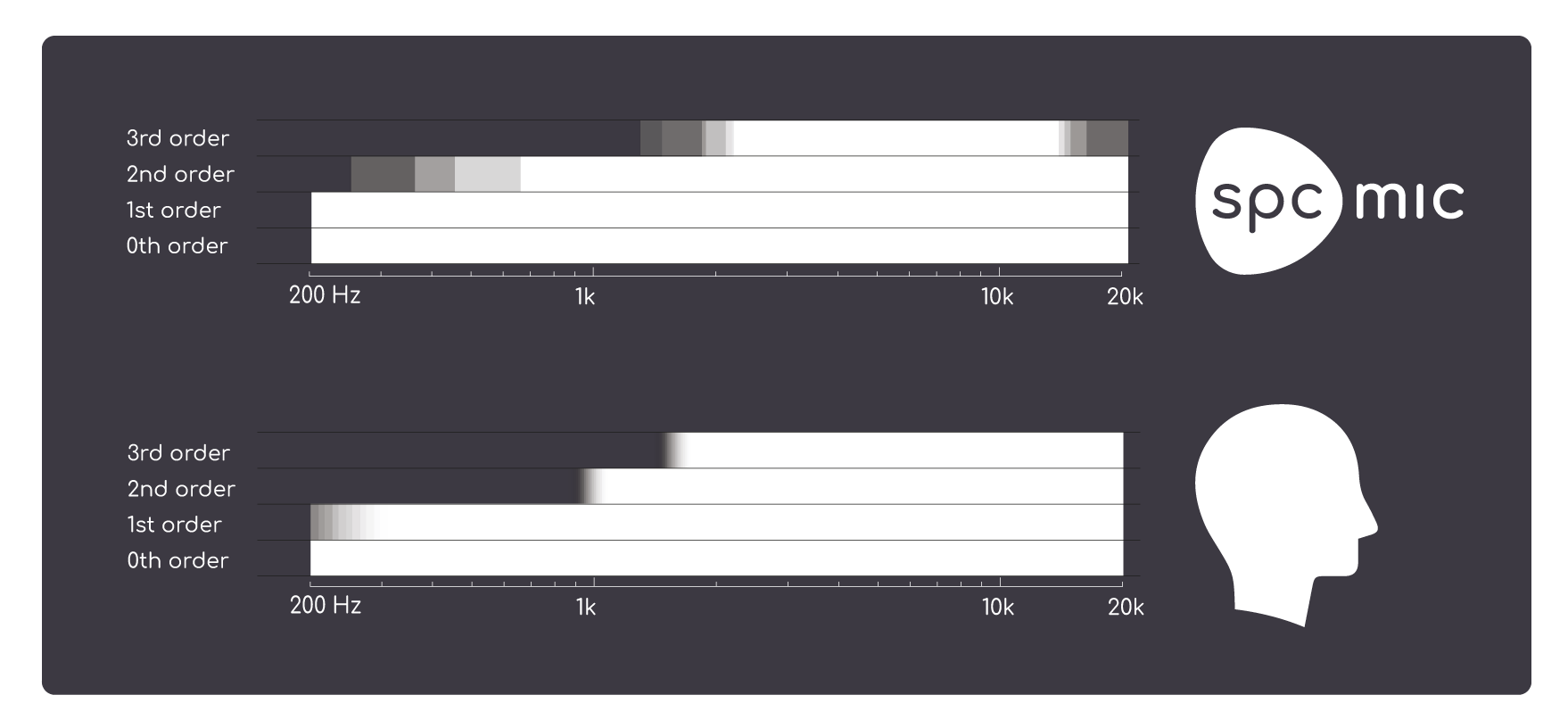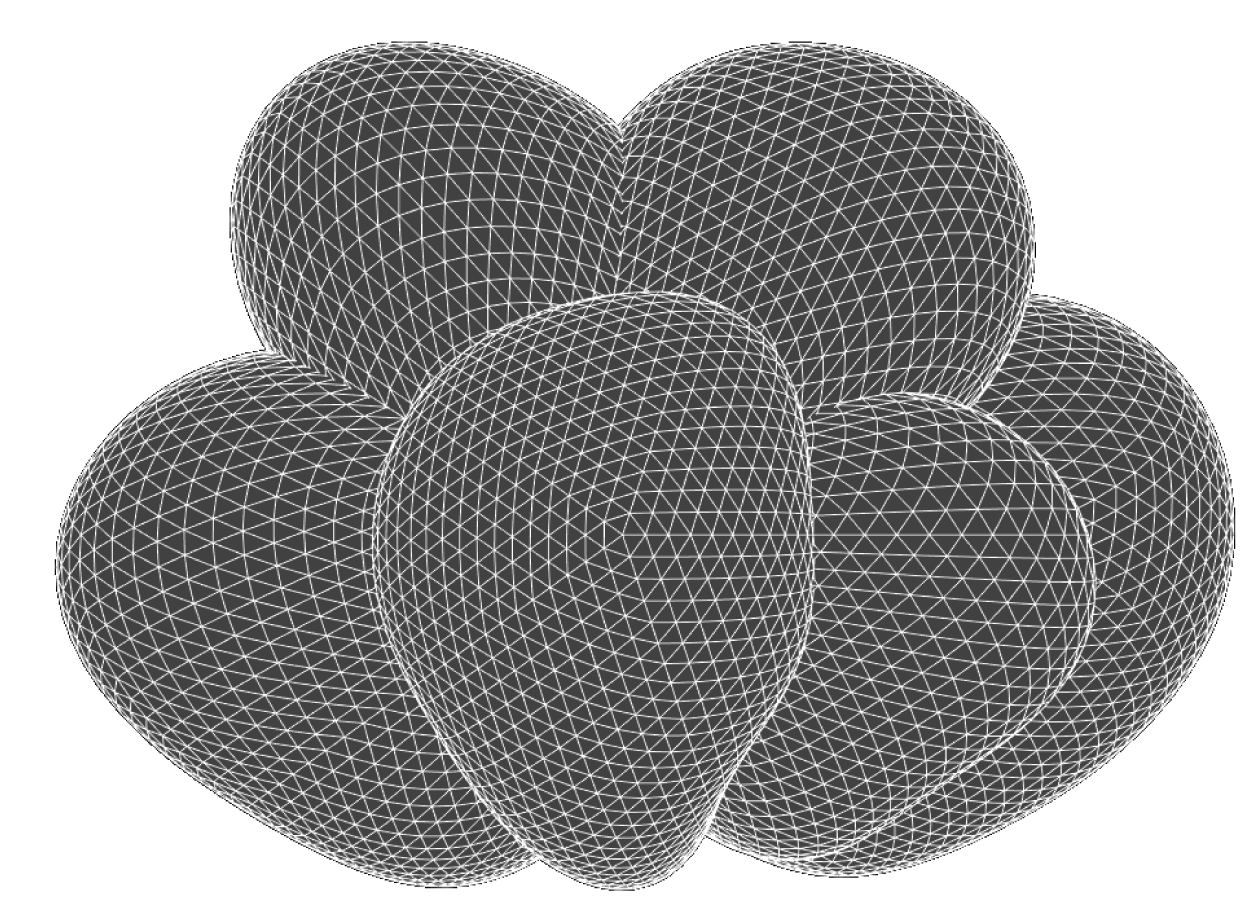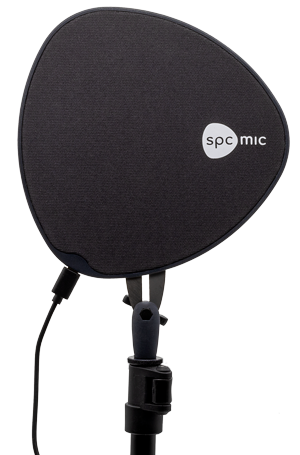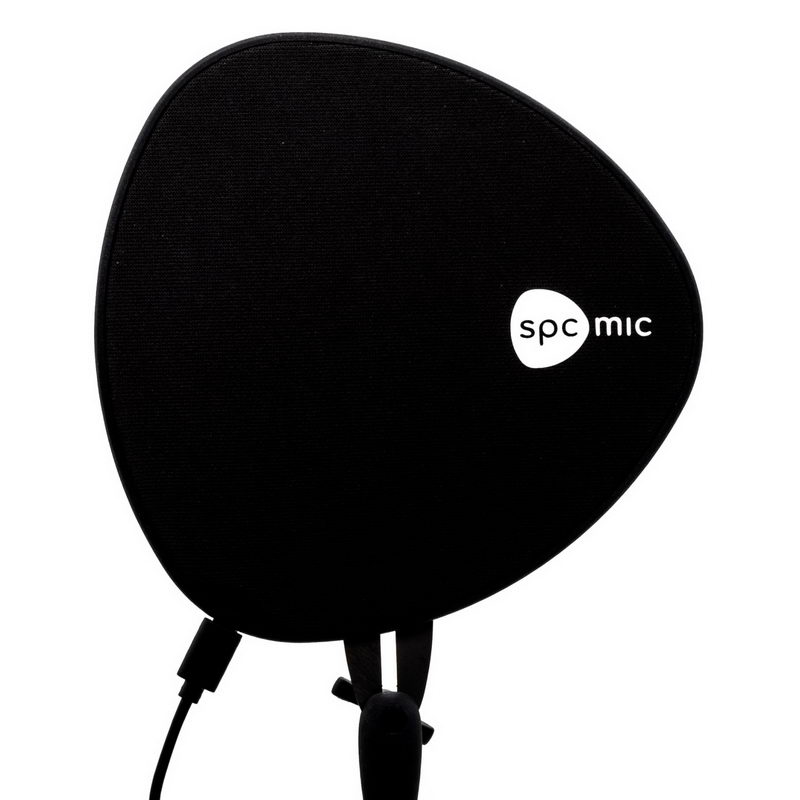The sound of space
Imagine yourself wearing a VR device, watching a 3-dimensional, 360 degree recording of a real-world event. If you turn your head towards something that makes a sound, you expect the sound to now come from straight ahead. Conversely, if something happens outside of your field of view, you expect the sound to tell you which way you need to turn to see it.
It might seem that the technical challenges of recording sound for a movie theater would be very different from those involved in recording for headphones used in a VR context. But it turns out they have the same solution: You need a spatial sound recording. Such a recording not only captures sound from all directions. It also captures the directions which all sounds come from.
This is what the spcmic (pronounced spacemike) does. To pull off a trick like that and to do it with the necessary spatial resolution and professional sound quality, you need a device which consists of many microphones. The SpcMic has 84. It is a relatively compact device, a disk with a diameter of 17 cm. On the other hand, it is only 5.6 mm thick, which makes it quite unobtrusive if oriented correctly. Although the spcmic is distinctly two-dimensional in shape, it is absolutely not two-dimensional in function. It captures the full three-dimensional soundfield, using a combination of different physical phenomena. It comes with software which makes it just as easy to use as any normal microphone. In fact, it can perfectly well do the job of any professional studio microphone, or stereo pairs of microphones, whether coincident (i.e. X/Y) or non-coincident (i.e. ORTF). It can produce make dummy head recordings in 5th order resolution, 7th order shotguns and 3rd order ambisonics. The list goes on.
tech specs
Ambisonics for human beings
Spatial recordings are often stored and exchanged in the form of ambisonic files. The highest resolution currently in common use is 3rd order ambisonics, which has 16 audio channels.
For physical reasons, any spatial microphone will have a particular frequency range for each ambisonic order. The human listener is subject to the same laws of physics, and our ability to perceive spatial sound also has a particular frequency range for each ambisonic order. This relates to the acoustical properties of the head, torso and outer ears.

The spcmic has been designed for human beings. Each ambisonic order has a frequency range which matches or exceeds that of the human physiology.
3D surround
The spcmic can form surround and 3D surround at a resolution which goes well beyond 3rd order ambisonics. While it would be impractical to use 5th, 6th or even 7tn order ambisonics in a real-life workflow, spcmic and its software can leverage these resolutions internally without any kind of parametric or nonlinear sharpening.

Beam shapes of the 7.1.4 beamformer
Equivalent self noise: 14 dB-A, 18 dB CCIR
Acoustic overload point: 130 dB SPL
Extremely quiet and incredibly far away
In its ultra sensitive beamforming mode, the spcmic has an equivalent self noise as low as 3 dB-A / 12 dB CCIR, to record the very quietest sounds.
In the long range mode, it operates with a beamform narrower than most dedicated shotgun microphones, with a self noise of 6 dB-A / 14 dB CCIR. All without any form of active noise cancellation or other nonlinear processing.

Equivalent self noise: 6 dB-A, 14 dB CCIR
Acoustic overload point: 130 dB SPL



